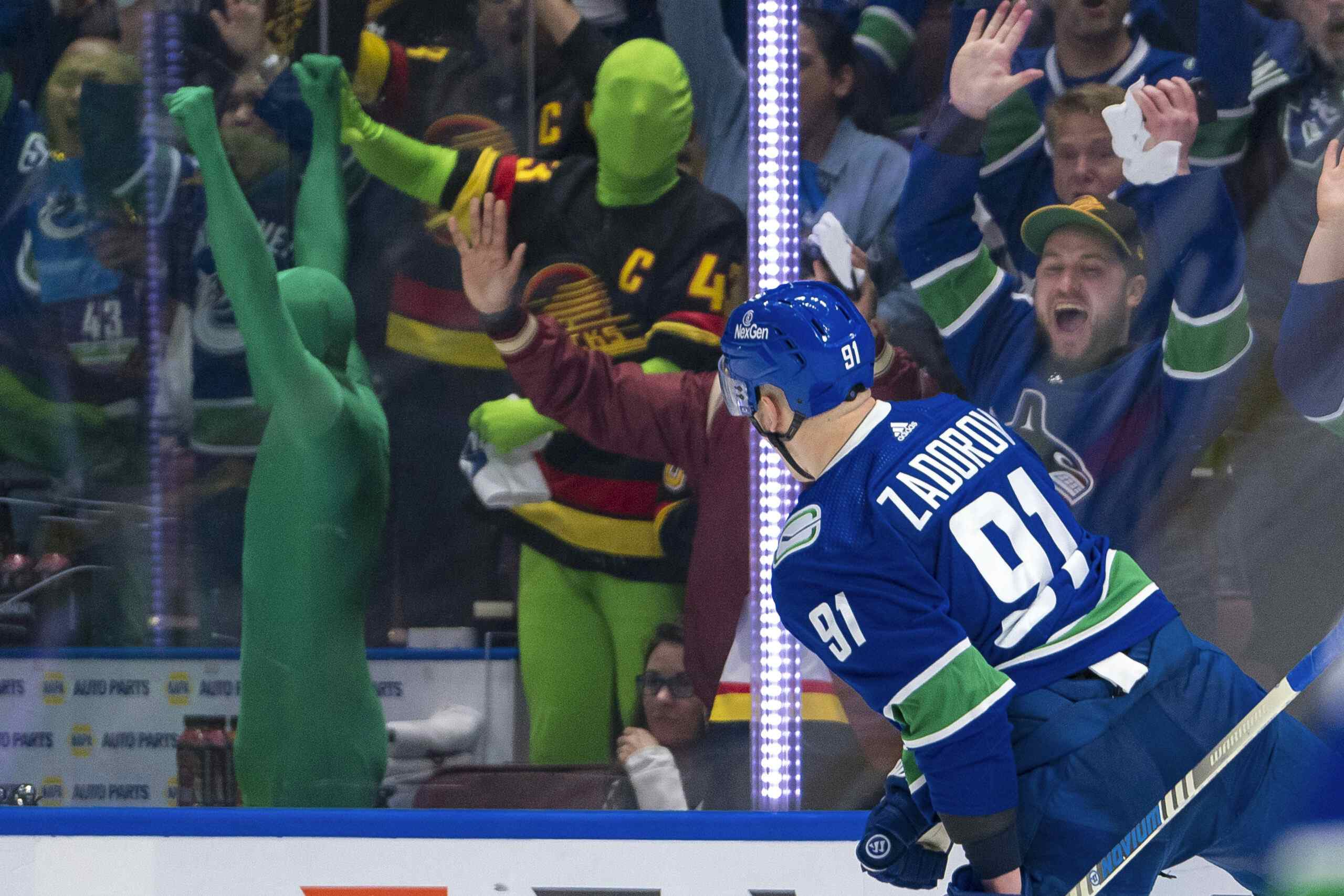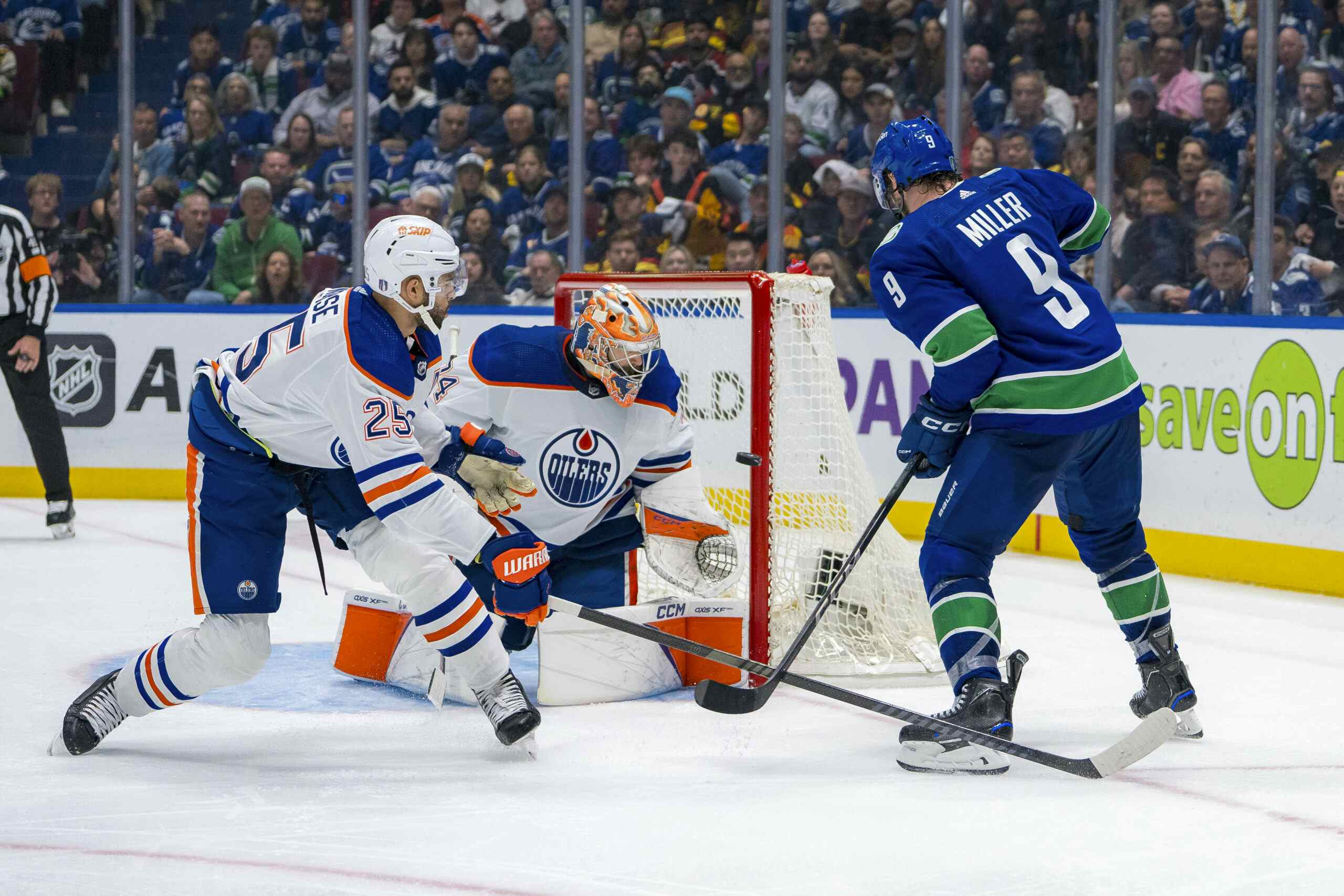Lineup Depth Will Be A Must in 2020 Playoffs

By Jason Gregor
3 years agoThe Edmonton Oilers have eight solid NHL defenceman on their roster. They have had a complimentary mix of puck movers, puck carriers, physical prowess, good skaters, youth and experience. And they will likely need all of them if they want to make an extended postseason appearance.
In a normal year, the playoffs can become a battle of attrition, where staying healthy is as much of a challenge as the opponent, and this season it might be even more important with five playoff rounds.
Recent history illustrates how important it is to have more than six NHL defenders. Very rarely do teams only use six defenders in the postseason, and it is even rarer to see teams trot out a healthy forward group.
I combed through the previous three playoff runs and looked at how many defenceman teams used.
2017
The Pittsburgh Penguins won the Stanley Cup, but only eight of their skaters played all 25 playoff games. Luckily for them, four of those were defenceman and three of them — Brian Dumoulin, Ron Hainsey and Olli Maatta — logged the most TOI/game on the entire roster. The Penguins used eight D-men on their run to the Cup, with Justin Schultz and Trevor Daley each missing four games, and Kris Letang, their best defenceman, didn’t play a single game. So really they were using their seventh, eighth and ninth defenders.
Nashville made their first Cup Final appearance and were one of the rare teams to have all six D-men play every game. A healthy blueline played a key role in them making to the Final.
Anaheim and Ottawa were in the Conference Finals and each of them used eight defenders.
The Rangers, Oilers, Blues and Capitals won a round each. The Oilers used eight defenceman, and the injury to Andrej Sekera in game five of the second round was a big blow, while the others all used seven defenceman. The Capitals dressed seven D-men in five of their 13 games.
Only Calgary, Chicago and San Jose used six defenders in their first round losses, while Minnesota, San Jose and Toronto using seven and Columbus and Boston used eight.
2018
The Cup Winning Capitals used seven D-men, but mainly six as Christian Djoos missed two of their 24 games. Three of their defenders — John Carlson, Matt Niskanen and Dmitri Orlov — played 24+ minutes/game.
Vegas used seven in their Cinderella run to the Finals, but only Nate Schmidt played more than 21 minutes/game. Luca Sbisa played 12 games and Jon Merrill played eight with them averaging 16 minutes/game.
The Lightning were one of the most healthy teams I’ve seen in many years. They had 17 skaters play all 17 games, with only Ryan Callahan missing two. But they are a massive outlier.
The Winnipeg Jets used nine D-men in their 17 games, but only two — Dustin Byfuglien and Jacob Trouba — played in every game. Byfuglien played over 26 minutes/game for the Jets.
Boston, Pittsburgh, San Jose and Nashville all used seven D-men, but their top five played all the games.
Columbus and Toronto were the only first round losers to dress six defenders. The rest used seven and Los Angeles used eight.
2019
The Stanley Cup winning St. Louis Blues used seven D-men and all of them played at least 17 games. They relied heavily on their top-three of Alex Pietrangelo, Colton Parayko and Jay Bouwmeester (playing 23-25 minutes/game), but their 4th-7th D-men were important to their championship.
The Boston Bruins used eight defenders en route to the Cup Final and only two — Torey Krug and Brandon Carlo — played all 24 games. Luckily Zdeno Chara and Charlie McAvoy only missed one game each, so the Bruins’ top four was usually intact, but their third pairing had four players moving in and out.
Carolina had seven D-men, and each played in nine of their 15 games.
The San Jose Sharks’ blueline was the healthiest of the final four, using mainly six D, with Tim Heed playing in only three of 20 games.
Columbus used eight D-men, and they lost Markus Nutivaara after game two in the first round. He played over 21 minutes in the first two games against Tampa Bay, and none of his replacements came close to playing similar minutes.
Dallas used nine defenders in their 13 games, but their top-four played every game.
Colorado used seven defenders and each played in seven of their 12 games.
The Islanders used seven in their two rounds.
Toronto, Nashville and Winnipeg used six in their first round losses, while the other teams used seven. Often overlooked in Tampa Bay’s stunning four game loss to Columbus was the injury to Viktor Hedman. He only played in two games.
DEPTH IS VITAL…
In 2017 the Oilers’ blueline depth wasn’t as good as this year’s. Eric Gryba and Griffin Reinhart were the seventh and eighth defenders. Kris Russell, Darnell Nurse and Adam Larsson were the only defenders to play all 13 games.
This August, Caleb Jones and Matt Benning might start in the press box. Benning played 17 minutes/game in the 2017 playoffs and led the D corps with a +3 rating. If an injury occurs or one of the top-six defenders struggles, head coach Dave Tippett has the luxury of inserting a quality player.
And teams usually need quality forward depth as well.
If you look at teams who made the Conference Finals the past three seasons it is amazing how few of them have the same lineup most nights.
Only eight Penguins dressed in all 25 of their games 2017 Cup Winning games. They used 23 different skaters.
Nashville had 11 players play in all 22 games and they used 18 different forwards.
Ottawa saw 11 players dress in 19 games and iced 24 different skaters.
In Anaheim’s 17 games they had 11 players dress in every game and used a total of 24 skaters.
Nashville had 11 players play in all 22 games and they used 18 different forwards.
Ottawa saw 11 players dress in 19 games and iced 24 different skaters.
In Anaheim’s 17 games they had 11 players dress in every game and used a total of 24 skaters.
The 2018 Capitals were fairly healthy with 12 players dressing in all 24 games and 19 skaters played in at least 13 games. They used a total of 23 skaters.
Vegas used 22 skaters, but 13 of them dressed in all 20 games.
Tampa, as mentioned earlier, was the healthiest team we’ve seen in years using only 19 skaters, but 17 of them played in all 17 games.
Winnipeg used 23 skaters with 10 of them playing in all 17 games.
Vegas used 22 skaters, but 13 of them dressed in all 20 games.
Tampa, as mentioned earlier, was the healthiest team we’ve seen in years using only 19 skaters, but 17 of them played in all 17 games.
Winnipeg used 23 skaters with 10 of them playing in all 17 games.
The 2019 Blues used 21 skaters, with all of them playing at least eight games and 11 playing all 26 games.
Boston iced 23 different skaters and nine played in all 23 games.
San Jose used 22 skaters, but 19 of them played in 11+ games and 11 players skated in all 20 of their games.
Carolina needed 23 skaters, with 21 of them playing at least seven games. They had 12 players dress in all 15 games.
Boston iced 23 different skaters and nine played in all 23 games.
San Jose used 22 skaters, but 19 of them played in 11+ games and 11 players skated in all 20 of their games.
Carolina needed 23 skaters, with 21 of them playing at least seven games. They had 12 players dress in all 15 games.
2020 DEPTH WILL BE TESTED…

February 25, 2020; Anaheim, California, USA; Edmonton Oilers left wing Andreas Athanasiou (28) celebrates his goal scored against the Anaheim Ducks with defenseman Darnell Nurse (25) center Tyler Ennis (63) and center Connor McDavid (97) during the third period at Honda Center. Mandatory Credit: Gary A. Vasquez-USA TODAY Sports
This postseason teams could very likely see teams employ even more players with 16 teams having the potential to play five rounds, and the eight “seeding” teams adding three extra games as well.
Teams will have played one exhibition game in 142 days before the playoff rounds begin on August 1st. Because of the heightened intensity of the playoffs, it is fair to expect an increase in injuries compared to previous playoff seasons. Unlike the regular season, when veterans play at least three or four exhibition games after a three-to-six-month off-season, this year’s playoffs will see players playing with much more pace, intensity and vigour than they would in the opening weeks of a regular season. The concern among trainers and medical staffs is they could see an increase in tissue injuries.
If that is the case, then a team’s depth could play a major role in who hoists Lord Stanley’s cup in late September or early October.
And of course goaltending will be hugely important.
Outside of the 2017 Penguins, who had Marc-Andre Fleury start 15 games and Matt Murray start 10, the other conference finalists, over the past three seasons, usually ran with one goalie. Carolina had to go to their backup, Curtis McElhinney, last season for four starts, after Mrazek got hurt in game two of the second round, but McIlhinney had much better numbers in his four starts than Mrazek had in his 11.
Nashville and Ottawa had their starter in all their games and John Gibson started 16 of the Ducks’ 17 games in 2017.
Brayden Holtby didn’t start the first two games of 2018, but came in relief in game two of the first round and then started the next 22 as the Capitals won their first Stanley Cup. Vegas, Winnipeg and Tampa used the same starter in all of their games that playoff season.
Jordan Binnington, Tuukka Rask and Martin Jones started all of their team’s games last playoffs.
While skater depth is important, having your starting goalie remain healthy and play well seems to be a must for the vast majority of teams looking for a deep playoff run. And with the unprecedented situation facing all teams, where many goalies weren’t on the ice nearly as much as they would be in a regular off-season, the health of a team’s goalies could become the talking point of this year’s playoffs.
RECENTLY BY JASON GREGOR
- Oilers Have Potential Issue for 2021 Expansion Draft
- Oilers Have More Than Just Special Teams
- Stanley Cup Coming to Edmonton and McDavid Underrated?
- Monday Musings: Draft Lottery Wasn’t A Major Surprise
- Quick Hits: Oilers Win Lottery, Hub Cities and OT Concerns
- Oilers All-Time Drafted Roster
- Hart Trophy Will Become Annual Debate in Edmonton
Recent articles from Jason Gregor





